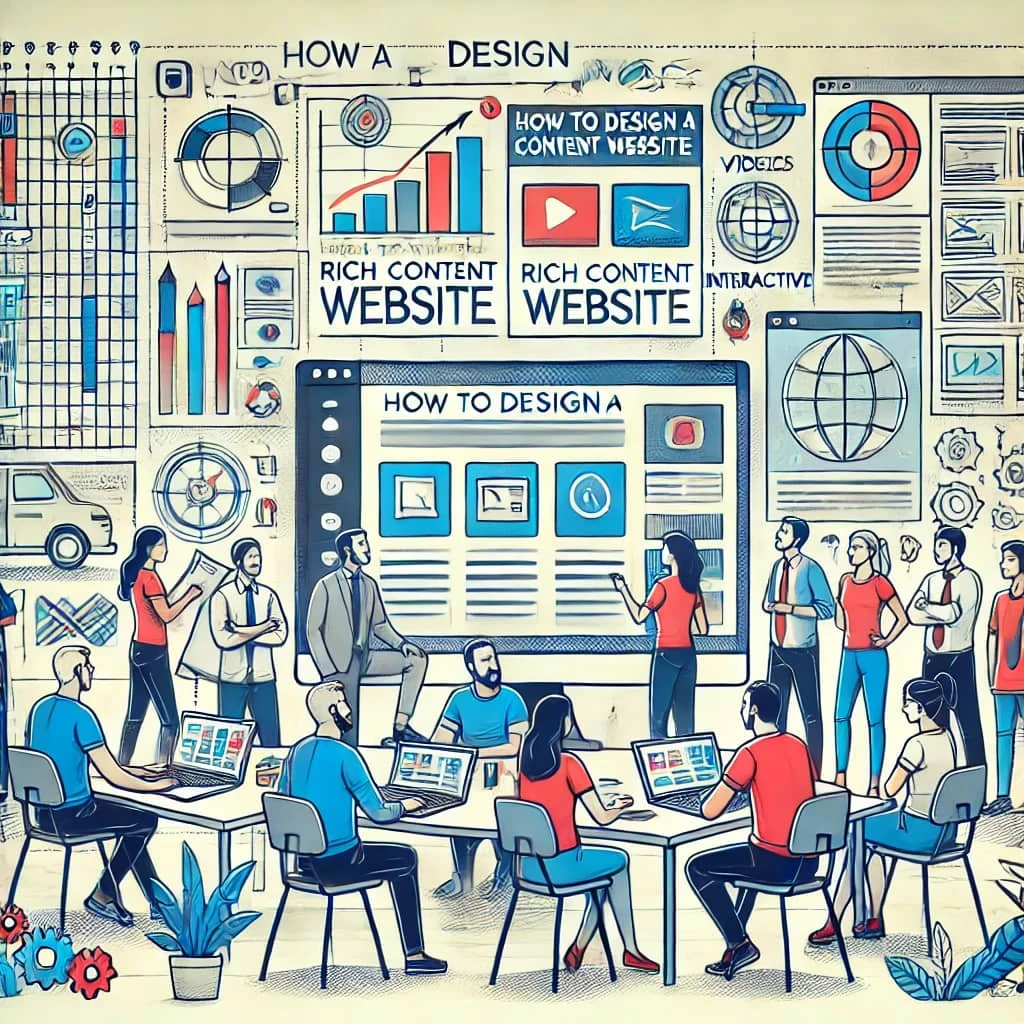In today’s digital age, having a website is not just about being present online; it’s about creating a rich, engaging experience that captivates your audience and drives conversions. A well-designed, content-rich website is essential for standing out in the crowded digital landscape. In this interactive guide, we’ll walk you through the essential steps to design a website that is not only aesthetically pleasing but also loaded with valuable content.
1. Understanding Your Audience
Before diving into design, it’s crucial to know who your audience is. Start by asking yourself:
-
Who is your target audience?
-
What are their pain points?
-
What kind of content are they looking for?
2. Content Planning and Strategy
Content is the backbone of a rich website. A clear content strategy ensures that every piece of content serves a purpose.
-
Content Mapping: Create a content map that outlines the key pages and the type of content they’ll host.
-
SEO Considerations: Ensure your content is optimized for search engines. Use keyword research tools to identify high-traffic keywords relevant to your business.
3. Designing for User Experience (UX)
The user experience is crucial in keeping visitors engaged. A content-rich website should be easy to navigate and visually appealing.
-
Intuitive Navigation: Organize your content in a way that makes it easy for users to find what they’re looking for. Use clear menus and internal links.
-
Responsive Design: Ensure your website is mobile-friendly. A significant portion of web traffic comes from mobile devices, so your site should look great on all screen sizes.
Interactive Tip: Test your website’s usability with real users. Gather feedback to identify areas of improvement. Tools like user testing can be invaluable for this.
4. Incorporating multimedia elements
Rich content goes beyond text. Integrating various forms of media can enhance the user experience.
-
Videos and Podcasts: Include engaging videos or podcasts that complement your content. This is particularly effective for tutorials, testimonials, and case studies.
-
High-Quality Images and Infographics: Use visuals to break up text and make complex information easier to digest. Tools like Canva or Adobe Spark can help you create professional-looking graphics.
Interactive Tip: Use heatmaps (e.g., Hotjar) to see how users interact with your media elements. This can help you optimize placement and engagement.
5. Content Management System (CMS) Selection
Choosing the right CMS is crucial for managing your content efficiently.
-
WordPress: Ideal for most businesses due to its flexibility and vast plugin library.
-
Squarespace/Wix: Good for those who need a more straightforward, drag-and-drop interface.
-
Custom Solutions: For complex needs, consider a custom-built CMS tailored to your specific requirements.
Interactive Tip: Experiment with different CMS platforms. Most offer free trials or demos, so you can see which one fits your needs best.
6. SEO and Content Optimization
Even the best content is useless if no one can find it. Optimize your content to ensure it ranks well in search engines.
-
On-page SEO: Focus on optimizing title tags, meta descriptions, and header tags. Ensure that your content is keyword-rich but not keyword-stuffed.
-
Internal Linking: Use internal links to guide users to other valuable content on your site, which can improve your SEO ranking.
Interactive Tip: Use tools like Yoast SEO (for WordPress) to monitor and improve your on-page SEO efforts.
7. Performance Optimization
A content-rich website can sometimes slow down if not optimized properly.
-
Image Optimization: Compress images to reduce load times without compromising quality.
-
Lazy Loading: Implement lazy loading for images and videos to improve initial load time.
-
Content Delivery Network (CDN): Use a CDN to speed up content delivery across different geographical locations.
Interactive Tip: Run your website through Google PageSpeed Insights or GTmetrix to identify areas that need optimization.
8. Analytics and Continuous Improvement
The job doesn’t end after the website is live. Continuous monitoring and optimization are key to long-term success.
-
Google Analytics: Set up goals and track user behavior to see which content performs best.
-
A/B Testing: Regularly test different elements of your website to see what resonates most with your audience.
Interactive Tip: Set up a monthly review of your analytics data. Identify patterns and areas for improvement to keep your website in top shape.
In conclusion
Designing a rich content website is a blend of art and science. By understanding your audience, planning your content, focusing on user experience, and continuously optimizing, you can create a website that not only attracts visitors but also turns them into loyal customers.
Ready to build a content-rich website that stands out? Contact Bestrigo Digital Marketing and AI Agency today, and let’s create something amazing together! Remember, a successful website is constantly evolving and adapting to the needs of its users. By staying proactive and staying ahead of trends, you can ensure your website remains competitive in the digital landscape. Contact us today to get started on your journey to a successful online presence!


0 Comment